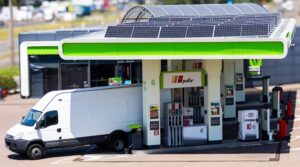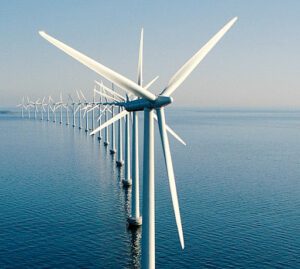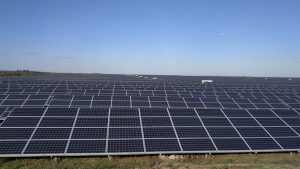
The total capacity of SPPs in the network of OKKO filling stations has reached 5.9 MW: these are stations at 244 filling stations, 40 of which were put into operation in the first half of 2025, the company’s press service reports.
“In the first half of 2025, OKKO commissioned rooftop SPPs at 40 more filling stations, as well as on the building of its trucking company. Thus, 244 filling stations of the network are already meeting part of their electricity needs with sunlight. Their total capacity now reaches 5.9 MW,” the company said in a release on Monday.
It is specified that the capacity of its rooftop SPPs is mainly 15-25 kW, although there are several stations with 50-65 kW.
“Depending on the capacity, electricity consumption, configuration, and other factors, one such SPP can cover 15% to 55% of the daily consumption of gas stations during the period of active generation,” the company said.
According to the press release, OKKO intends to continue solar electrification of its filling stations, and in the coming years, rooftop SPPs may be installed at about 100 more of them, where there are technical possibilities for this.
It is specified that OKKO will invest UAH 30 million (including VAT) in the SPP project at its filling stations in 2025.
“It is expected that in 2025 the total generation of solar stations at OKKO filling stations will exceed 5 million kWh,” the release says.
As reported with reference to Vasyl Danyliak, CEO of OKKO Group, OKKO Group, which includes the operator of the eponymous filling station network, Concern Galnaftogaz, plans to have approximately 600 MW of capacity in wind power, 200 MW in solar power and 150 MW in energy storage facilities over the next five years.
The network under the OKKO brand includes approximately 400 filling stations.

Ukraine in January-June 2021 additionally commissioned 709 MW of new electrical installations based on renewable energy sources (RES), which made it possible to increase the overall capacity of RES generation in the country to 9,225 MW.
According to the State Agency on Energy Efficiency and Energy Saving of Ukraine, in particular, in January-June, wind power plants (WPP) with a capacity of 278.4 MW were additionally built, solar power plants (SPP) for 257.4 MW, SPPs of private households – for 156 MW, biomass power plants – for 10.4 MW, biogas power plants – for 6 MW, and small hydropower facilities (HPP) – for 1.6 MW were also commissioned.
“About EUR530 million has been invested in the establishment of 709 MW of renewable energy facilities,” the agency stressed.
Of the total capacity of 9,225 MW of Ukrainian renewable energy sources, the share of solar power plants is 6,351 MW, renewable energy sources – 1,593 MW, household solar power plants – 933 MW, solid biofuel power plants – 119 MW, small hydroelectric power plants – 118 MW and biogas plants – 111 MW.
The largest renewable energy capacity in Ukraine was commissioned in 2019 – some 4,669 MW, while in 2020 – 1,574 MW, in 2018 – 848 MW, in 2017 – 291 MW, in 2016 – 136 MW, in 2015 – 32 MW.
HPP, RENEWABLE ENERGY, RENEWABLE ENERGY FACILITIES, SPP, WPP

The issue with the disconnection of the solar power plant (SPP) of the Canadian investor TIU Canada in Nikopol located on the territory of the Nikopol Ferroalloy Plant (NFP) from the power grid lies in the plane of a business dispute, Executive Director of the Solar Energy Association of Ukraine Artem Semenyshyn has said.
“This issue lies on the plane of a business dispute. The two companies have agreed on the joint use of the substation. One is as a producer of electricity, the other is as a consumer,” he said at a press conference at Interfax-Ukraine on Friday.
At the same time, Semenyshyn said: “Indeed, it is very bad when we lose the already built “green” generation facilities, which are now idle and do not increase the share of clean electricity.”
In addition, he drew attention to the presence of several examples of how already built stations in Ukraine, due to problems with connecting to the power grids, cannot start work for a long time. “We urge the government to create a commission that would consider each case separately and contribute to the solution of the issue,” the director of the association said, stressing that this is a matter of the state’s image before both foreign and domestic investors.
“It will be very “interesting” if Ukraine starts reporting that it is reducing the share of “green” generation due to disconnections,” the head of the association said, expressing his concern.
As reported, TIU Canada, an investor in the field of solar energy, owned by Refraction Asset Management (Calgary, Canada), filed a lawsuit against the NFP due to the disconnection of its 10.5 MW SPP from the power grid in March 2020.